

Chalk of the Northern Province: its regional context
Symposium
a joint meeting of the Hull Geological Society
with the Yorkshire Geological Society and Hull University
10th to 13th September 2015
Report of the meeting by Mike Horne:-
After nearly two years of planning the Chalk
Symposium too place on 10th to 13th September 2015. It was
a joint meeting of the Yorkshire Geological Society, University of Hull
Department of Geography and Earth Sciences and the Hull Geological Society.
Nineteen delegates attended the Thursday field
trip travelling by coach. The trip was led by Paul Hildreth to four Lincolnshire
Quarries. The first site was Grasby Quarry where we saw the top of the Ferriby
Formation and the base of the Welton Formation. The Black Band Member is exposed
here and weather material was cleared quickly in a couple of places to
facilitate sampling and photography. Examples of
Mytilloiides bivalves were found a few metres about the Black Band
Member.
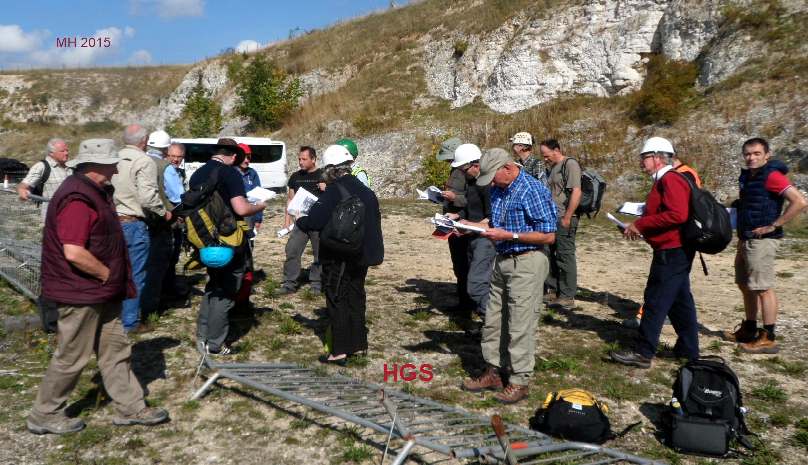
Delegates were taken on a tour of Melton Ross
Quarry and works on the coach, with a commentary by Tom from Singleton Birch
Ltd. This was followed by a talk by Mark in the site office block about the
history of the company and the lime production at the site.
At Burnham Lodge Quarry delegates were able to see
the large tabular flints of the “Flint Maximum” in the Burnham Formation. The
quarry flor was very overgrown with brambles and nettles.
The final site visited was Vale House Quarry where
the Vale House Flints are exposed. Higher in the quarry is the Ulceby Marl and
the Ulceby Oyster Bed.
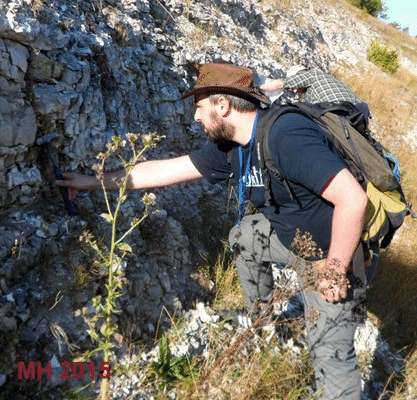
In the evening there was an Icebreaker for full
delegates in the Map Room of the Cohen Building at the University of Hull.
Mike Rogerson opened the Friday meeting by telling
the delegates about the fire alarm procedures for the building. Welcoming
speeches were then given by John Knight the President of the YGS, Mike Horne the
Secretary of the HGS and Jeff Blackford the Head of the GEES. John chaired the
rest of the Friday Meeting.
There were three themed sessions of lectures –
Flints and Flint formation, Biostratigraphy of the Chalk and Engineering Geology
of Chalk Sea Cliffs. The abstracts and full texts of some of these lectures are
published on the HGS Website. About 35 people attended.
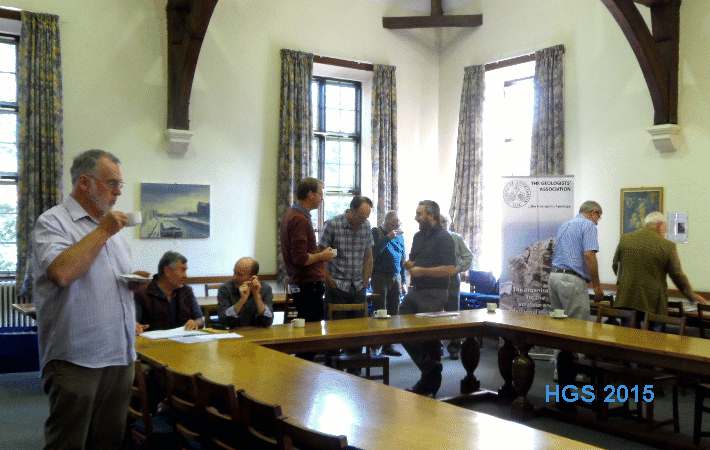
The Symposium Dinner was held at the Station Hotel
in Hull.
On Saturday morning there was a discussion session
open to all delegates in the Map Room of the Cohen Building chaired by Simon
Mitchell. The discussions covered the formation of flints, and their
relationship with sponges and radiolarian; biostratigraphy and microfossils; the
importance of good local observational skills and conservation of sites for
future scientific use; the future use of cyclostratigraphy; the public
understanding of our science and the publication of scientific papers.
Delegates were also able to view the following
displays – Chalk fossils from France by Mathieu Deville de Periere, rare
Turonian ammonites from Lincolnshire by John Green and Flints from Norfolk by
Russell Yoemans. John also exhibited and escribed a painting of a reconstructed
fossils of the Vale House Flints sequence.
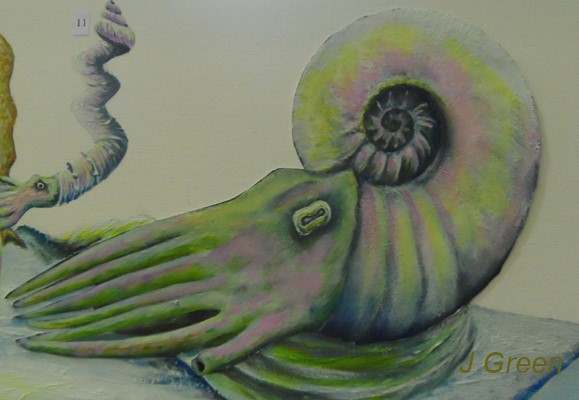
In the afternoon there were four keynote lectures.
This session was chaired by John Knight and Mike Horne. The abstracts and full
texts of these lectures will be published on the HGS Website. About 45 people
attended the Saturday afternoon lectures.
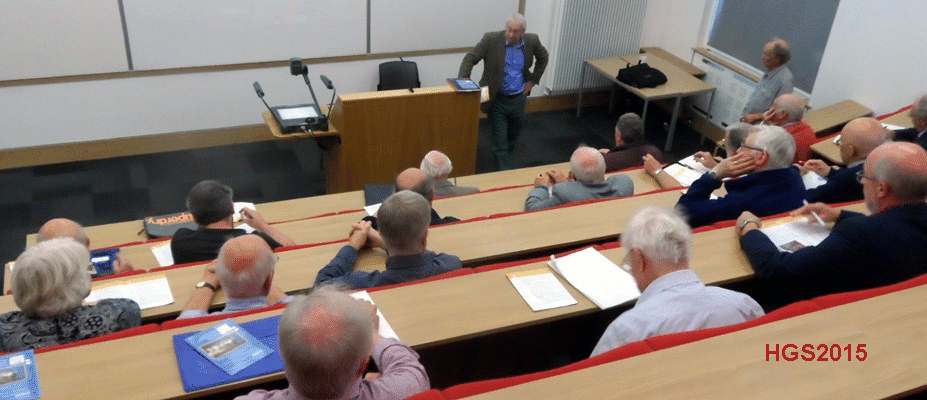
The final day of the symposium consisted of a
field trip to the cliffs at Flamborough led by Mike Horne; eighteen delegates
travelling by car and bicycle. At North Landing Mike described the geology and
stratigraphy of the area and pointed out the paramudra. Carious flints and
Thalassoinoides type flints were also
examined, and the Ulceby Oyster Bed was found.
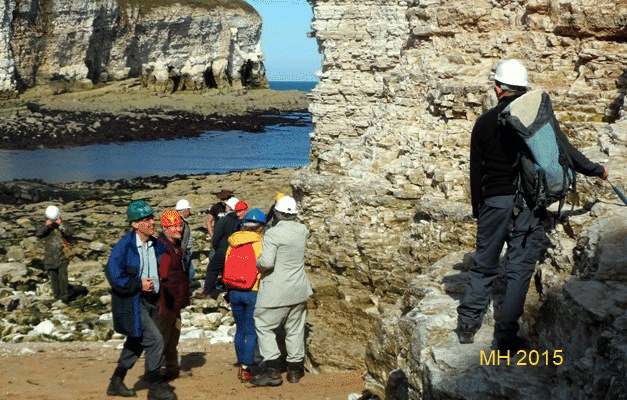
Lunch was taken on the beach at Selwicks Bay. In
this bay the junction of the Burnham and Flamborough formations is seen. Slump
structures in the chalk beds of the Burnham Formation were examined and the
faulting and folding admired.
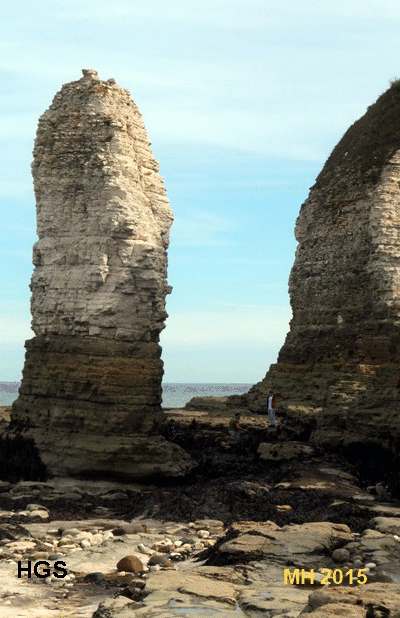
The final few hours of the Symposium were spent at
Dane’s Dyke examining the cliffs for zonal fossils; examples of typical
Inoceramid bivalves and plates of
Marsupites were seen. Simon Mitchell showed delegates the beds of the
Uintacrinus anglicus zone, though unfortunately no examples of the fossil were
seen. A fresh landslip allowed the sampling of Quaternary sands and calcretes
from higher in the cliff. To end the visit Rodger Connell and Mike Horne
described the Quaternary deposits in the Danes Dyke valley and the ongoing
research of the HGS Flamborough Quaternary Research Group.
List of registered delegates attending.
Haydon Bailey, Tony Benfield*, David Blyth Rodger
Connell*, Matthieu Deville de Periere, Paul Dodsworth, Andrew Farrant, Malcolm
Fry*, Derek Gobbett*, Felix Gradstein, John Green*, P Hardman, Malcolm Hart, Ian
Heppenstall*, Mary Heppenstall*, Liam Herringshaw*, Paul Hildreth*, Stephen
Holding*, B Holroyd, Mike Horne*, John Holt, Christopher Jeans, Andrew Jones,
Graham Kings*, Molly Kirven*, Brian Kneller*, John Knight, David Leather, John
Martin, Simon Mitchell, Rory Mortimore, Andrew Newell, Pete Rawson*,
Mark Woods and Russell Yeomans.
|
|
(* Member of the Hull Geological Society
Copyright - Hull Geological Society 2015
Registered Educational Charity No. 229147
Copyright Hull Geological Society.
e-mail - m.j.horne @ hull.ac.uk
updated 25th October 2015